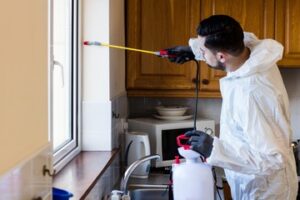Dogs need loving care when their owners are away. Dog Boarding Chico is one way to provide this care.

Before you choose a facility or sitter, tour the living space and kennel area. If a facility or sitter doesn’t allow this, it is a red flag. Inquire about vaccination requirements and emergency procedures.
A professional dog boarding facility is an excellent option for pet owners who want to ensure their pets’ well-being while they are away. It provides a safe, convenient, and structured environment that can alleviate stress or anxiety that may occur when pets are left alone at home or with untrained caregivers.
Regular interaction with other dogs and humans in a controlled setting enhances social skills, improves adaptability, and can reduce behavior issues associated with isolation or fear. Structured exercise routines can also keep dogs physically active, reducing the risk of destructive behaviors that may be triggered by boredom or loneliness.
Boarding can also help meet the needs of pets with specific health or behavioral concerns. Boarding facilities can implement strategies to address these concerns, including dietary adjustments, medication administration, and other treatments. They are typically equipped to handle a wide range of emergency situations, as well.
In many cases, a reputable boarding facility will offer flexible drop-off and pick-up times to fit in with busy schedules and travel plans. They will also have transparent policies regarding vaccination requirements, and how they handle medical emergencies or injuries. It is always a good idea to visit the facility in advance, so you can assess the cleanliness and security of the site, and see how your dog reacts to the atmosphere and staff.
Dog boarding is a valuable service for pet owners who often need to be away from their homes or work, whether it is for business trips, vacations, or in response to family or health crises. While it is possible to find a professional pet sitter to care for your pet, this is usually not cost-effective, and lacks the support of a larger operation that can manage unforeseen circumstances.
When choosing a boarding facility, look for one that is close to your home or work. This will reduce transportation time, and make it easier for you to drop off and pick up your dog. Make sure the facility is licensed and has adequate staff, equipment, and space to accommodate large groups or pets with special needs.
Socialization
Dogs are social animals and thrive on interaction with people and other dogs. Boarding facilities often allow dogs to play with each other and engage in group activities, providing mental stimulation and helping to prevent boredom that can lead to destructive behaviors like chewing or barking. Regular social interactions can also help dogs become more confident and accustomed to meeting new people and pets, making it easier for them to adapt in future situations.
Some boarding services provide a more home-like experience, allowing dogs to relax in a comfortable environment and receive personal attention from caregivers. This can be beneficial for older or more sensitive dogs who may be stressed by a noisy, industrial setting. Home-based boarding can also give owners peace of mind that their pets are receiving the care they need, with regular updates and photos to keep them updated about their furry friends.
Professional boarding facilities have the resources, staff and training to deal with any situation that may arise during your pet’s stay. Many have established relationships with local veterinarians or emergency veterinary clinics, which will be able to provide prompt advice or immediate care in case of a medical emergency. In addition, boarding facilities usually have their own veterinarians on call or in the building, so they will be able to take your pet directly to the vet if necessary.
Another important consideration when choosing a boarding facility is their ability to adhere to your pet’s usual feeding and exercise routine. A lack of consistency can cause stress and discomfort for some dogs, leading to gastrointestinal issues and even aggression. Some boarding facilities offer transportation to and from their location, which is convenient for busy pet parents.
While some pets adjust well to boarding, others are more prone to anxiety and fear, especially extra-sensitive dogs or those who have a history of negative experiences. Boarding services can accommodate these concerns by providing the distractions and comforts of home, such as familiar blankets or toys, to make the transition as smooth as possible for your dog. Many boarding services also provide pet daycare as an additional service, which can be helpful for more anxious pups or those who may need some extra love and attention during the day.
Health Monitoring
Dogs thrive in social interactions with other dogs, and professional boarding facilities allow them to enjoy these interactions under the watchful eye of trained staff. This can help reduce anxiety and stress for both dogs and their owners, helping them to adapt to their new environment and make the most of their boarding experience.
Pet boarding services also offer an important health monitoring service, which is crucial to a safe and comfortable stay for your dog. This includes regular check-ins to ensure that your pet is eating well, sleeping comfortably, and adjusting to their new environment. If any issues are discovered, they can be quickly addressed and prevent minor concerns from becoming major problems.
A good boarding facility should also be prepared to accommodate special requirements for your dog, such as administering medication or dietary restrictions. They should also be able to monitor health conditions like gastrointestinal issues, which are common in stressed pets. They should also have a protocol for dealing with emergency situations, including having access to the necessary contact information and a plan for getting your dog immediate veterinary attention.
When choosing a boarding facility, be sure to research the company and visit it in person if possible. Look for a clean and well-maintained environment with well-trained staff that are experienced with dog behavior and care. It is also important to consider whether the facility has in-house veterinary services and an on-call veterinarian, or if they work closely with your own veterinarian.
After returning home from a boarding stay, it’s important to keep the lines of communication open with the boarding facility and ask for updates about your pet’s stay. Stress-related behaviours, such as increased clinginess or changes in appetite, can be caused by fear of the boarding environment or food sensitivities. In these cases, it is helpful to give your dog a few days to readjust and return to their normal routine before reintroducing them to other people and places. Gastrointestinal issues, like vomiting or diarrhea, can also be a sign of illness and require prompt veterinary attention.
Safety
Dog boarding is one of the most trusted ways to ensure your dog’s safety while you’re away. However, a successful boarding experience involves careful preparation, from health checks to emotional readiness. Boarding exposes dogs to unfamiliar environments and routines, as well as a variety of unforeseen risks. This makes ensuring that your pet will enjoy his or her stay as much as you do a top priority for many owners.
Fortunately, many facilities take great measures to ensure that pets are safe and happy during a boarding stay. They’ll make sure your dog receives the attention and care they need, from quality food to playtime supervision. They’ll also monitor your pet’s behavior and health, and be on hand in case of an emergency.
A reputable facility will require a current vaccination record for all boarders, including rabies, distemper and Bordetella (kennel cough). They’ll also verify that dogs have a negative fecal exam prior to boarding. This prevents the spread of illness to other pets and shows that the boarding facility takes responsible pet ownership seriously.
Other important safety considerations include evaluating enclosure security and fencing, assessing fire safety equipment, checking personal item policies, and noting noise levels and stress reduction efforts. This will help you decide if the facility is suitable for your dog.
Another way to assess a boarding facility’s safety is by taking a tour and asking questions. This will allow you to see the living spaces, play areas and staff in action, as well as learn about any specialized precautions they may have for special needs pets.
It’s also a good idea to evaluate the facility’s emergency procedures, including a plan for evacuating dogs in the event of an incident. This will provide you with peace of mind and assurance that your pet is in capable hands.
If your pet has a favorite bed, toy or treat, don’t bring them along with you to the boarding facility unless they offer separate accommodations for dogs. In an open boarding environment, these items could get lost or become a nuisance for other pets.

